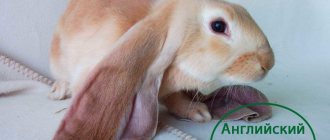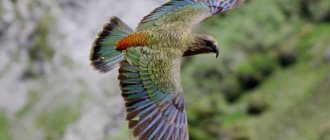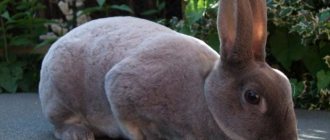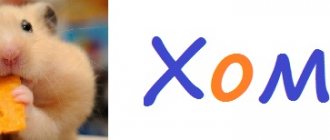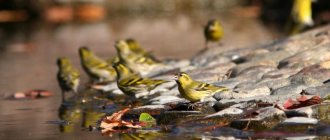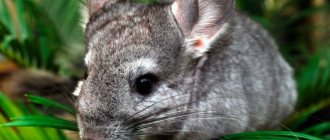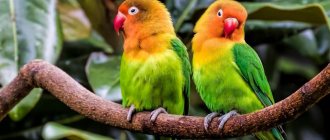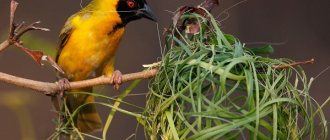The charming, charismatic, talented cockatoo parrot has collected a lot of conflicting reviews. On the one hand, this is a very smart and funny bird that is interesting to communicate with. But at the same time, you need to devote all your time to your pet, since the parrot loves to be the center of attention and painfully endures loneliness. Faced with such a feature of the crested bird, many cannot stand the obsessive temperament. In this article you will receive all the information about the life of a cockatoo in the wild and at home, and also learn how to deal with an impudent ward and raise him correctly.
History of the species
In the scientific classification of birds, the cockatoo family first appeared in the middle of the 18th century, when the French scientist Mathurin-Jacques Brisson proposed the name Cacatua for it, similar to the next step - the genus. Initially, the genus Cacatua contained five species, later 16 more were added to it.
After 1840, the classification underwent changes thanks to the British zoologist George Robert Gray. He placed the cockatoo in the subfamily Cacatuinae of the family Psittacidae. The type taxon became the genus Cacatua.
Currently, there are 21 species of the genus Cockatoo, some of which are listed in the Red Book. The natural habitat is the eastern territories of the southern hemisphere of the Earth: Australia, New Guinea and New Zealand, as well as the Solomon Islands.
The origin of the name “cockatoo” is associated with the peculiarity of the bird’s appearance. The powerful beak, reminiscent of wire cutters, is noteworthy. The Malay word for kusaka is kakatuwah. Naturalists adapted the term they heard, and it entered European languages in the form of “cacatua”.
How to feed?
In order for the parrot to always be cheerful and healthy, it is recommended to provide it with what a cockatoo eats in the wild, namely, balanced food. The daily diet of poultry directly depends on the season. So, with the advent of cold weather in autumn days and until mid-spring, the pet’s menu should consist of 50% grain mixture. The rest of the time, the bird’s diet is more varied. During this period, fresh fruits, vegetables and herbs make up 75% of the total menu.
The mixture for the parrot, which is offered in specialized stores, consists of several types of grains:
- corn;
- oats;
- sunflower seeds;
- buckwheat and others.
This mixture will provide the bird’s body with the necessary microelements, vitamins and essential oils.
Vegetables and greens
Despite the fact that the mixture of grains is enriched with substances beneficial to the bird, it cannot be fed monotonously. It is recommended to supplement the main food with fresh root vegetables and herbs, which can be found even near the house. They contain those microelements and vitamins that are not enough in grain.
The main available root vegetables containing many substances important for birds are:
- carrot;
- celery;
- turnip;
- tomato;
- beet;
- cabbage.
Before feeding the cockatoo, vegetables need to be boiled for half an hour. It is not advisable to salt them during heat treatment.
Information! As bird owners note, cockatoos happily eat vegetables that do not need to be cooked - these are fresh beans and young corn, cucumbers, zucchini, and sweet peppers. Such products can be given either individually or as an assortment.
It would be a good idea to add medicinal herbs to the bird’s menu, which often grow in the nearest park - young nettle, dandelion, plantain and others. They contain a lot of useful substances, such as vitamins B, K, PP, A and others. In addition, such greens are rich in vegetable protein. Before offering grass to your feathered pet, it should be thoroughly washed, chopped and mixed with the main food.
Fruits and berries
Cockatoos, like all exotic birds, prefer fruit as a treat, especially kiwi, pineapple, citrus fruits, and bananas. Parrots also like more affordable fruits - apples and pears. Regardless of the type of fruit, it should first be washed and cut into pieces so that they can fit in the pet’s paw.
Among the berries, you can offer your parrot rowan, raspberries, and grapes. The bird will not refuse plums, cherries and strawberries. Before giving large fruits to the bird, it is recommended to remove the seeds from them.
Complementary foods of animal origin
Complete feeding of a parrot is impossible without proteins and proteins, which contain animal products in large quantities. Therefore, birds include boiled chicken meat in their diet, as well as low-fat dairy products, but in limited portions. Parrots will never refuse to eat yogurt, cheese or cottage cheese, but they should only be offered such foods with a reduced lactose content.
Cockatoos also add boiled eggs to the menu - both chicken and quail. However, it is recommended to offer them to your pet only 1-2 times a week, not more often.
Attention! You can compensate for the deficiency of minerals in the bird’s body with the help of specialized supplements. They are sold in the form of granules, powder or compressed bars.
Description of the cockatoo parrot
Each member of the Cockatoo genus is a large, stocky bird with a large head and a dense build.
What does a cockatoo look like?
- Body weight is 300-1200 g depending on the species, age and gender.
- Body size 40-70 cm from beak to tip of tail.
- The parrot's lower limbs are short and stable; wide paws are equipped with sharp curved claws.
- The tail is short in length and rounded or spade-shaped.
- The color of the iris in males is almost black, in females it is red-brown.
A striking feature of the bird’s appearance is its wide curved beak, which folds into a “lock”, like the jaw bucket of a loader. The horny tissue of the beak has an amazing margin of safety. The parrot uses its beak as a third limb or auxiliary tool for movement, protection, and obtaining food.
The “calling card” of a cockatoo is its crest. By the elongated feathers descending from the crown of the neck to the neck, you can easily recognize a cockatoo among other parrots. The crest serves as a way for the bird to express emotions: in a calm state it lies on the back of the head, but if the parrot is excited, the crest unfolds like a fan. In most birds, the crest is a different color from the main plumage.
Did you know? The cockatoo genus is interesting because these parrots lack blue and green feathers. Most colors are based on white, pink and gray, with some species having an accent shade of black.
Lemon-crested or orange-crested cockatoos
This species lives on the islands of Indonesia. The lemon-crested cockatoo's crest is orange. In appearance they are similar to yellow-crested cockatoos, but more slender and graceful. Males differ from females in eye color: females are brown and males are black.
Orange-crested cockatoos are demanding of attention; if they do not enjoy communication with their owner, they become offended and scream loudly. It is recommended to keep them in pairs.
When kept alone, they become very attached to a person, require attention, the lack of which they get offended and scream a lot, so it is better to keep them in pairs.
Habitat
Fans of exotic birds know on which continent cockatoos live. The natural range is limited to Australia and nearby archipelagos. 11 species live on the mainland, representatives of seven species can be found in Indonesia, the Philippines and the Solomon Islands. Three species are found both on the islands of New Guinea and on the continent. The easiest way to say where Goffin's cockatoo lives is that it inhabits only the Tanimbar island group. However, a few individuals were introduced to Singapore, where they multiplied and established a population outside their natural range.
Judging by the distribution area, each species has its own habitat. Some crested parrots choose open landscapes, others live in rain forests, and others prefer urban areas. Indonesian cockatoos live in wetlands. Nomadic species remain in southwestern Australia during the nesting season, and move to cool coastal zones in the summer.
Bird domestication
The first tame parrots appeared in Europe after the campaigns of Alexander the Great. The birds were popular and were kept in special cages made of ivory and silver.
In some countries, parrots were even considered sacred due to the fact that they could speak with a human voice.
Teachers were hired to teach strange birds how to talk. In those days, a parrot that knew a lot of words was valued more than a slave.
The fall of Rome had a negative impact on birds; nothing was heard about them for a long time. And only after the discovery of Australia and America and their subsequent colonization, bright birds appeared again in Europe. They came to Russia quite late: only in the 17th century.
Lifestyle in nature
Cockatoos are characterized by a gregarious way of living. The flock is formed according to the family type, increasing over time due to the emerging offspring. A group of birds moves within the region or leads a sedentary lifestyle. Birds fly well, but move on the ground slowly, with clumsy steps. The parrot climbs trees much faster, clinging with its beak and jumping from branch to branch.
Cockatoos are herbivorous birds. Their diet includes seeds, nuts, fruits and bark of fruit trees, and tubers. Certain species of parrots consume specific foods, while others have a wide menu. For example, the black cockatoo prefers casuarina cones and macadamia nuts. Most crested birds love to feast on corn cobs, making daring raids on farmland. Before the breeding season, all parrots eat insects, larvae, even small rodents.
The parrot eats fruits directly on the tree. It picks the fruit, holds it with its paw, and uses its beak to gnaw out the juicy pulp in search of seeds. The tormented fruit is thrown to the ground and moves on to the next one. To diversify its diet with roots and grass seeds, the bird descends to the foot of the trunk, but feels uncomfortable there. In this regard, the feeding method is curious: while one part of the flock obtains food and fills its crops, the other parrots provide security. Then the groups change.
How to choose a home?
The cockatoo is a fairly large bird. An adult reaches 75 cm, weight can vary within 1 kg. Accordingly, such a pet needs a lot of space so that it can move freely, jump and spread its wings. Only in proper conditions will the bird always be in a good mood.
The cage for a cockatoo should be all metal, and the size and shape depend directly on the specific parrot and their number. So, for small breeds, the size of the house should be within 70*50*50 cm, and for large birds - 170*100*100 cm. Moreover, if you plan to house several birds in a cage, it is better to choose a dome-shaped or tetrahedral house shape.
Setting up a parrot's home
The cockatoo cage must be equipped in a certain way to make the bird feel comfortable. To do this, a pair of crossbars, a feeder and a drinking bowl, and various toys are installed in it. In this case, the poles must be made of wood, preferably oak, maple or beech. Their diameter depends on the size of the bird - the larger it is, the thicker the perch.
A paw stand is also required. It has a cone shape, and its size is selected taking into account the dimensions of a particular bird.
Information! The footrest should be of such parameters that the toes do not touch each other when the bird sits on it.
The stand must be placed so that the bird's head and tail do not come into contact with the bars of the cage. It should also be well fixed, given that cockatoos weigh a lot and are very mobile. In addition, a special block of calcium is hung in the parrot's cage, on which it will sharpen its beak. A special lock should be equipped on the door of the house, otherwise the bird may fly out. Toys are selected individually to suit the character and characteristics of the bird.
Reproduction
The ability to procreate in cockatoos appears at the age of 3-7 years, and in males much later than in females. This is a positive factor, because an adult, experienced bird is more reliable in terms of caring for its family. Parrots nest once a year. A pair is formed on the initiative of the male, who touchingly cares for the chosen female: “kisses” her beak, smoothes her feathers, scratches her head. Trying to please his partner, he spreads his tuft, dances and constantly coos.
Having created a pair, the parrots begin building a nest. Natural cavities in large trees are where cockatoos live during the breeding season. The bird cannot independently hollow out a depression inside the trunk, but is able to expand the finished cavity with its beak and paws. For such hollows, the male has to compete with his relatives, and sometimes even evict small animals from their homes.
The male prepares the nest, covering it with twigs, wood chips, leaves, and grass. When the excavation is ready, the female occupies the nest and soon lays two to five eggs. After 20-29 days of incubation, blind chicks appear, covered with sparse down. After 2-3 months, the young begin to fly, but remain under parental care for several years. As soon as parrots mature sexually, they go into independent life, but do not leave the flock.
Inca cockatoo chicks
Interesting observation! There is a strong opinion that cockatoos are monogamous. However, in nature, not all crested parrots create a family for the rest of their lives. Often, after hatching the chicks, the birds lose affection for each other, and the pair breaks up.
Character of a cockatoo: behavior in a flock and with the owner
These parrots cannot live alone. In the wild, they live in large flocks of up to 100 individuals. In lean years, several flocks unite and migrate to areas rich in food. In captivity, a cockatoo chick considers a human partner as its partner. He shares his joys and sorrows with him, shows his tenderness towards him and tries to take care of him in his own way. If the owner spends little time with the bird or often leaves it alone for a long time, from boredom and abandonment it becomes ill and begins to tear out feathers. This pathology can lead to the death of the pet.
Cockatoo parrots are very sentimental. In a flock, they maintain communication with relatives and carefully look after their relatives. Their spectacular plumage is a credit to their affectionate relationships with other members of the species. The gentle nature of the cockatoo allows it to find a partner within the flock. As a rule, close contact between birds occurs long before the mating season. They become attached to each other and become fast friends. And when it’s time to have offspring, they find a common home. There are cases where birds were left alone after the death of their partner.
Breeders often complain about the loudness of these birds. Crested birds really love to express their emotions loudly. With a characteristic cry, they can demonstrate both joy and anger. Pets also use a loud voice to attract the owner’s attention. Often it is screaming that becomes a tool of manipulation. The cockatoo bird, realizing that the sounds it makes are unpleasant to humans, uses them to get forbidden food, a thing that is not given to it, or to leave the cage.
The vices of these parrots also include vindictiveness and a desire to bite. These birds are famous for their good memory. Those who offend, tease or hurt them will definitely pay for what they have done at some point. The cockatoo parrot, having caught the moment, will punish the offender with a traumatic bite. While other birds of the parrot family can only pinch a finger, these large pets are capable of tearing out a large piece of meat and breaking a phalanx. However, if the owner does not harm the bird, takes good care of it and follows safety rules when handling it, he has nothing to fear.
Cockatoo species
There are 21 species in the Cacatuidae family, each of which is characterized by a specific color.
The most famous species of cockatoos with descriptions:
- Great yellow-crested. One of the largest in the family. The size of the bird tends to 50 cm, weight is about a kilogram. The feathers are white with a golden tint, and the narrow crest is yellow. The parrot learns well and performs complex tricks. He is popular due to his outstanding abilities: he can change his voice beyond recognition, reproduce various sounds and melodies.
Greater yellow-crested cockatoo - Great white-crested (Alba white cockatoo). The bird is medium in size - approximately 40 cm and 600 grams. Snow-white plumage covers the entire body. There is a wide white crest with rounded tips, similar to a flower bud. The intelligent parrot is incredibly artistic and can imitate human speech.
Great white-crested cockatoo - Pink (Gala cockatoo). Better known by the names "clown" or "fool", which he was given for his strange behavior. The back and wings are gray, the belly, head and neck are red. The crest is light pink. It grows up to 35 cm. A bird with a peaceful character easily adapts in captivity. Pink cockatoo
- Inca Cockatoo (Major Mitchell's Parrot). The most beautiful representative of the family. It has a luxurious variegated crest, which when unfolded resembles a bright fan or flower. The feathers of the “crown” are red, with yellow spots in the middle, and the tips are white. Body color is white and pink. It is prohibited to export it outside of Australia, and within its natural range, breeding in captivity is possible only under special regulations.
Inca cockatoo - Black palm. The largest and grandest. Completely black, except for the leathery red cheeks. The high crest consists of narrow curled feathers. It is the oldest species of cockatoo living in Australia and is also an extremely rare bird - likely to become extinct in the coming years due to habitat loss and low reproductive rates.
Black palm cockatoo - Banks' mourning cockatoo. A black parrot with white markings in a mottled pattern. The underside of the tail is half red in males, with orange stripes in females. In addition, females have black feathers on their chest and belly with an orange border.
Banks' mourning cockatoo
The other parrots are also beautiful, each in their own way. Several species of these exotic birds are endangered. Five species have conservation status in Appendix I Cites: Goffin's cockatoo, Moluccan cockatoo, red-tailed cockatoo, yellow-crested cockatoo and palm cockatoo.
Population and species status
Photo: Pink cockatoo parrot
The main threats to the cockatoo population are habitat loss and fragmentation and wildlife trade. Maintaining the population at the proper level depends on the availability of nesting sites in the trees. In addition, many species have specific habitat requirements or live on small islands and have small ranges, making them vulnerable.
The Nature Conservancy, concerned about the decline in cockatoo populations, has hypothesized that suboptimal juvenile rates among the entire population may have occurred due to the loss of breeding grounds following inland clearing in the last century. This can lead to the aging of wild cockatoo flocks, where the majority are post-reproductive birds. This will lead to a rapid decline in numbers after the death of older birds.
Catching many species for sale is now prohibited, but trade continues illegally. The birds are placed in boxes or bamboo tubes and transported by boat from Indonesia and the Philippines. Not only are rare species smuggled out of Indonesia, but common cockatoos are also smuggled out of Australia. To calm the birds, they are covered in nylon stockings and packed in PVC pipes, which are then placed in unaccompanied baggage on international flights. The mortality rate during such “voyages” reaches 30%.
Recently, smugglers are increasingly exporting bird eggs, which are easier to hide during flights. The cockatoo trade is believed to be carried out by organized gangs who also trade Australian species for overseas species such as macaws.
Intelligence
In the parrot family, the cockatoo is considered one of the most intellectually developed. He has a good memory, a logical mind, and conversational talent.
Epithets characterizing cockatoos:
- Cunning. He can pick a complex lock, steal and hide an important thing, do something nasty, and then pretend that he is not guilty. Can solve puzzles. Capable of cunningly luring out a treat, even if punished.
- Revengeful. He remembers the evil done to him and returns it in an increased size. Being offended, he does not make contact, refuses food, ignores toys and treats.
- Talkative. He is still able to remember and pronounce a few dozen words, but this parrot speaks much worse than the gray parrot. However, the desire exceeds the ability, and the cockatoo bird chatters incessantly - “what I see, I sing.” She is much better at imitating animals and reproducing various noises.
- Sentimental. There is no parrot more gentle and affectionate than a cockatoo. This can be compared to the manifestations of a dog’s feelings for its owner. You need to see how the bird climbs to hug its owner and courtes the object of its love in every possible way - nothing could look more touching!
- Affectionate. He never gets enough attention from his owner. The parrot wants to participate in everything. To tame the pressure of the bird, breeders recommend getting a second cockatoo - in this case, the emphasis should shift to a partner.
- Demonstrative. If the bird doesn’t like something, it will scoop up food from the container by the handful and throw it to the bottom of the cage. After cleaning carried out by the owner, he deliberately tears the paper, scatters greens around the cage, and drops droppings wherever necessary. He shows dissatisfaction with his entire appearance: he spreads his crest, puffs up his wings, tilts his head, hisses.
- Loud. Expresses emotions very loudly. It is worth noting that cockatoo owners often have problems with their neighbors. Such a noisy bird is difficult for everyone around to tolerate. It only becomes silent in complete darkness.
- Careless. In games, in a fit of emotion, he does not restrain himself - he can bite painfully, hit with his paw or wings. Perhaps everyone who has a cockatoo in their home has “battle” scars received from their pet.
On a note! The cockatoo is an excellent manipulator. He notices the owner’s weaknesses and uses his knowledge with pleasure. Can express demands by shouting until he gets what he wants.
Peculiarities of habits
Temperament and curiosity are the main characteristics of cockatoos. When kept at home, this transforms into love and mischief. The first is accompanied by either frequent repetition of the name (oneself or the owner - it doesn’t matter), or frantic screams when emotions overwhelm.
Sabotage activities take place in complete silence, because cockatoos understand perfectly well what they will be praised for and what they will be scolded for. Therefore, you need to keep in mind: if a parrot is silent during the day, it is either sick or damaging your property.
But nature takes its course, so if you want to prevent your cockatoo from becoming a hypochondriac and hysterical (especially for males), make him a spacious cage and equip it with a very reliable lock.
Why shouldn't you get a cockatoo?
Otherwise, one not very beautiful morning you will find that your cute parrot is sitting in his open cage, as if nothing had happened, and in the room there is a painting “We took a walk...”
These include chewed baseboards with torn wallpaper, damaged furniture and shoes, and in the most tragic cases, broken wiring.
At the same time, the cockatoo himself looks completely satisfied and pretends that he does not understand what expenses he has put you through. And he sticks his head out: pet me, I’m good.
If your parrot has a tendency to escape, do not skimp on the quality of the cage material. The powerful beak of a cockatoo will allow it to bite through a wire that is not stiff enough and cut a window into the free world for itself without much effort.
Sometimes cockatoos have bouts of bad mood. This can be determined by unusual behavior. At such a moment, it is better to serve him his favorite treat, but very carefully, and under no circumstances try to pet him. They bite mercilessly and without any warning. In this case, the person receives very serious injuries.
https://www.youtube.com/watch?v=jquTyqszrjA
It has been noted that the larger the bird, the louder the sounds it makes.
Keeping at home
As the experience of breeders shows, cockatoos can be successfully kept at home. A large feathered pet requires different conditions than ordinary lovebirds or budgies. When planning to get a large, capricious bird, you need to carefully consider the nuances of care and maintenance. First of all, you should prepare the cage.
Arrangement of the cage
One cockatoo takes up as much space as a small flock of budgerigars. Therefore, a medium-sized cage will not work. A reinforced overall structure is needed. In a spacious cage or enclosure, you can place more accessories: install a container with soil and plant a low tree, lay out driftwood and spreading branches.
A few tips:
- It is important that the feeders and drinking bowls are of increased strength, preferably made of steel, otherwise an active parrot will break them.
- Plastic panels (aprons) around the perimeter of the cage will help prevent debris from falling apart.
- Waste accumulates at the bottom of the structure, which can be conveniently removed using a pull-out tray.
- Bird apartments have significant weight; for ease of movement, an element such as wheels is important.
In the absence of a person, the parrot needs to play, and for this it will need a stand and entertainment items made from natural materials: jute fiber, wood.
Nutrition
The diet of a large parrot should contain dry and juicy components in a ratio of 1:3. Unlike small parrots, cockatoos feel full for much longer - they accumulate food in their voluminous crop, which is slowly digested. The parrot needs to be fed thoroughly twice a day and given snacks several times.
At home, birds are fed dry mixtures for large parrots. Factory-made feed consists of millet, sunflower seeds, safflower, oats and other grains with a high content of proteins and carbohydrates. Fruits, boiled and raw vegetables are necessary for the wards, as is cereal food. They contain plant fibers, vitamins, and minerals. Cockatoos love berries, corn cobs, fruits with seeds - such foods are also entertainment for them.
Care and hygiene
A large cockatoo parrot is constantly busy with something, after this activity everything around is strewn with garbage. Caring for a pet often comes down to constant cleaning. To make your work easier, equip the cage with special panels and a pull-out tray. This way, all the dirt will remain inside the cage, and during cleaning you can brush it off the tray and wash it. Feeders are washed twice a day and then thoroughly wiped dry. The perches are cleaned dry; they should not be washed frequently, otherwise the tree will swell.
The care rules include regular bathing of the bird itself. Cockatoos love water; they are happy to put their heads under the spray of a sprayer, climb under the shower and open tap. There is no need to deny your pets their favorite pastime, but it is not recommended to deliberately immerse birds in water.
Important addition! Cockatoo feathers are covered with a special powdery coating that easily scatters over all surfaces. This pollen is a protective barrier for the bird, so frequent water procedures are undesirable.
Education and training
You need to tame and raise a cockatoo parrot from an early age. If you are lucky enough to purchase a foster chick, it should already be tame. In the first days, it is not advisable to approach a new pet unless necessary. At this stage, you should simply be in front of the parrot - mind your business not far from the cage. At this time, the bird watches the owner and gradually gets used to it. After the adaptation period is over, you can begin training. This is a long process, the result of which will disappoint or delight, depending on the character and abilities of the bird.
The cockatoo subtly senses the owner’s mood, is easily offended and withdraws from communication. The carrot and stick method does not work on him. A good attitude, tenderness, and openness have a good effect. However, excessive affection can also cause harm. It is necessary to clearly stop the bird’s incorrect behavior in a stern voice, but in no case should physical punishment be used. Remember - the cockatoo is incredibly touchy and vindictive.
Lifespan
The cockatoo parrot is considered a long-lived bird. It is not possible to calculate the average life expectancy in nature, but there is an assumption that it is approximately one and a half decades. After all, birds in the wild have many enemies, and in addition, from time to time entire flocks of parrots die from infectious diseases. Cockatoos live next to humans in good conditions for 40-50 years.
Diseases and causes of death
At home, the parrot is reliably protected from predators, fires, floods and crop failure. How long a tame cockatoo will live depends only on the owner and his family members.
Cockatoo diseases have a viral, bacterial or parasitic origin, but much more often parrots suffer from improper feeding or mechanical damage. A fairly common phenomenon is self-plucking, which highly intelligent parrots are prone to. In rare cases, there is a genetic disease that cannot be corrected.
Self-plucking in cockatoos
The cockatoo is an expensive parrot, and its treatment, accordingly, is not cheap. Caring for a sick parrot is quite difficult, and it is not always possible to avoid death. It will be easier for everyone if you prevent the development of the disease, and for this you need to contact a veterinarian at the first symptoms and do not forget about preventive examinations.
The death of a domestic cockatoo parrot most often occurs as a result of the owner's oversight.
Main causes of death:
- poisoning;
- burn;
- swipe;
- strangulation;
- pet attack.
The most unpredictable and mysterious factor that accelerates the death of a bird is depression. From the resulting stress, the cockatoo loses interest in life, refuses food, plucks its feathers to bare skin and gradually fades away.
Breeding
Breeding rare species of parrots at home requires considerable investment, as well as a lot of free time. The breeder must be immersed in the process and ready to come to the aid of the birds at any time. The female may experience difficulties during childbirth and other troubles. In addition, newborn chicks often have to be taken away from their parents and fed formula from the first days. Chicks raised by humans grow up tame and trusting.
Cockatoo chicks
Breeding rare birds as a business is a profitable business, but extremely responsible and complex.
Expert advice
Breeders who work closely with nipper parrots recommend weighing the pros and cons before purchasing. Perhaps, from the outside and in the video, the “clown” with a tuft seems cute, but this is just a beautiful picture. You won’t envy the people who live in the same territory as this capricious bird. They have to face various problems every day; When communicating with a Velcro parrot, a stable psyche is required. You need to be able to pacify the winged aggressor and educate him correctly.
Cockatoo parrot with friend
The main advice from an ornithologist is that when communicating with a bird you need to notice all the little things. Monitor changes in behavior in order to promptly correct the character and prevent the pet from feeling like the master of the situation. The subject of a home living corner, although he is the youngest member of the family, is obliged to know his place. Then living together will please both parties.
What do they eat?
The cockatoo menu is based on the following rules:
- a balanced diet with the presence of all necessary nutrients of plant and animal origin;
- high quality feed, its freshness;
- variety of food composition;
- change in nutrition depending on the condition of the bird (molting, nesting, etc.).
Diet of a cockatoo parrot
In their natural environment, parrots feed mainly on plant foods - cereals, fruits, nuts, and less often vegetables, but do not disdain small animals:
- lizards;
- insect larvae;
- worms.
The omnivorous nature of birds makes it easier to approach the formation of a diet when keeping them at home. But cockatoos may have their own individual dietary needs that need to be studied and taken into account.
For busy owners, there is an assortment of ready-made food for medium and large-sized parrots, which includes cereals, oil seeds, and mineral supplements.
For animal food, these parrots are content with chicken bones with cartilage and a hard-boiled egg. You can give them some dry cat or dog food.
Cockatoos should not be fed plants with a high content of phytoncides and essential oils (dill, onions, etc.), fruits such as papaya, persimmon and avocado.
What should you not feed your Cockatoo parrot?
From cereals, slightly damp (so as not to stick to your hands and clump) crumbly porridges are cooked from a mixture of rice and buckwheat in equal proportions. Parrots eat soaked peas and beans, dry corn (with less enthusiasm), but if they are given fresh legume pods or a milk corn cob cut into pieces, their joy will know no bounds.
The type of food used is mash - a mixture of raw and boiled foods of various types, containing the required amount of vitamins, microelements and calories. The good thing about mash is that it takes into account nutritional habits at different ages and the condition of the bird. It is more convenient to prepare it when there are at least two parrots in the house, because 2 tablespoons of such food is enough for a day, and it should always be fresh.
By the way, it is necessary to observe caloric intake: parrots suffer more from overfeeding than from hunger, since the owner always pays attention to their appearance: “Poor thing, he’s lost so much weight.” And a fat, overfed bird is perceived by some as a sign of good care. Meanwhile, a young cockatoo eats three small meals a day, while an adult is limited to two meals a day.
Yellow-crested cockatoo - All about the parrot species | Parrot species - yellow-crested cockatoo
The water must be fresh and clean. Despite the fact that it is difficult to call cockatoos tidy and after eating there is a lot of garbage and scraps of food left behind, they refuse to drink water if there are particles of food in it. Therefore, the water must be changed and the drinking bowl washed. The feeder should also be cleaned as often as possible.
How much does it cost and where to buy
You can buy an exotic decorative parrot with a crest without any problems. Cockatoos of common species are sold by private breeders and nurseries; Even large pet stores sell crested birds. Buying a bird in such places is quite risky, because there is no guarantee of health or compliance with the stated age and gender. For private sellers, the cost of birds averages 50-100 thousand rubles.
Helmeted Cockatoo
Specialized nurseries sell rare birds, bred independently or imported from European countries. Professional breeders comply with the regulations and provide the buyer with the necessary documents and test results. A cockatoo parrot from a nursery will definitely have a permanent ring on its paw or a veterinary chip. Several factors influence the price:
- origin;
- breed;
- age;
- floor;
- color;
- feeding method.
A white cockatoo costs about 90 thousand rubles, a yellow-crested cockatoo costs from 150 thousand rubles. Parrots of rarer species are sold at prices ranging from 500 thousand to a million rubles.
Poultry price and place of purchase
The price of a cockatoo can range from one hundred thousand rubles to half a million. It all depends on where the bird is purchased. They can be bought in a special nursery, on the market, or from an owner who breeds these parrots. When purchasing a bird from a nursery, the owner receives all the documents and the confidence that the health of the cockatoo has been carefully monitored. On the market, similar parrots can be purchased for 50 thousand rubles. But without the relevant documents and a special certificate about the state of health of the bird.
Before going to the market or nursery to buy cockatoo poultry, you should weigh the pros and cons and consult with family members. A new member joins the cell and should not be deprived of love. If you liked the article or have something to add, then leave your comments and also join our VKontakte group.
What is the appeal of the cockatoo parrot?
Breeders love cockatoos for their sociability and lively intelligence. Some bird habits delight children and adults: playing with the crest, bowing, squatting, courtship, dancing. An attentive and inquisitive parrot quickly learns to perform funny tricks and pronounce words.
Cockatoos become tightly attached to people, literally following on their heels. They appreciate care and experience separation dramatically. From interacting with a parrot you can get emotional satisfaction, joy and a positive atmosphere in the house.
When choosing a cockatoo as a pet, many do not understand what they are getting into. A capricious bird requires complete dedication, and without this its character deteriorates. And yet, the cockatoo is a companion bird, ready to become a devoted friend to a person for life.
What is a bird
The cockatoo is a sociable and intelligent bird that requires difficult care. This is a flocking creature, therefore, at home, a person is perceived by him as a member of the flock, and the parrot communicates with him, which is expressed in sounds, gestures and facial expressions, as far as this is applicable in this case.
Before purchasing a cockatoo, you need to think carefully about whether it can receive proper care and attention, and whether the owner has the intelligence and ingenuity to stop attempts at vandalism by the pet.
Introduction to the Cockatoo parrot
Health and illness
Any living creature can get sick, and parrots are no exception. Most often, diseases occur due to improper care. The most common are the following: intestinal and lung diseases, parasites, feather pulling.
It is unlikely that you will be able to determine on your own what the bird is sick with. Therefore, you should not delay a visit to the veterinarian if your pet exhibits the following symptoms:
- loss of appetite;
- sneezing and discharge from the nostrils;
- sharp screams;
- change in color and appearance of excrement.
If you do not treat your parrot, it may die.
A bird can also die from boredom during a long separation from its owner.
Necessary items and devices
Photo: https://pixabay.com/photos/sulfur-crested-cockatoo-1116179/
Cell selection
When purchasing a cockatoo, you initially need to understand that this is a rather large bird, and it will need a lot of space. Therefore, the pet’s home should be spacious. If the parrot can freely climb around the cage and spread its wings when desired, this will help it remain not only healthy, but also cheerful. And the bird’s good mood will certainly make its owner happy.
The optimal cage size for keeping a large parrot is 1.7 m × 1 m × 1 m. Medium parrots can be kept in a cage measuring 0.7 m × 0.5 m × 0.5 m.
The bars of a parrot's house should be made of solid metal and strong enough so that the pet does not easily bite through them.
Preference should be given to a cage with a retractable bottom; this little detail will greatly facilitate the process of caring for the bird.
If you plan to keep not one bird, but two or more, then you will have to build an aviary.
Home improvement
Necessary items that need to be purchased along with the cage are perches, a water bowl and a feeder.
Preference should be given to perches made from more durable wood species. They should be placed so that the pet sitting on the perch does not rest against the cage with either its head or tail.
The diameter of the perch is also of great importance. For large parrots, the diameter of this object should not be less than 5 cm. For medium parrots, a stick with a diameter of 2.5 cm is enough.
That is, the toes gripping the poles should not close.
Particular attention should be paid to the lock that locks the cage. In no case should the cockatoo parrot open it easily and, at any desire, be free.
Water, drinking bowl, feeder
The drinking bowl and feeder must be made of durable material, otherwise the parrot will break them very quickly.
Photo: https://pixabay.com/photos/sulfur-crested-cockatoo-parrot-3923181/
If everything is clear with food, the bird is quite gluttonous and requires it in sufficient quantities, then with water it is not so clear. If your pet hasn’t drunk all the water in a day, what should you do? Should I leave it or pour it fresh? The answer is simple: the water must be changed every day without fail, and the drinking bowl will also have to be washed every day.
Before giving water to a cockatoo, it must be left for at least a day to allow substances hazardous to health to evaporate.
You should also not give preference to boiled water; there is nothing healthy in it.
Lighting
An important issue is the placement of the cage. It has been proven that birds simply need the sun's rays vitally; they increase the body's resistance to disease and enhance metabolic processes in the blood.
You need to place your pet in the brightest room, preferably with a southern orientation, where the temperature will be from 18 to 20 degrees.
In the summer, parrots should spend quite a long time in the sun. And to prevent them from overheating, one side of the cage needs to be shaded.
In winter, if there is a lack of sunlight, it is recommended to use special lamps for additional illumination.
Ideal air humidity is 75-90 percent.
The cockatoo parrot is very sensitive to odors. The smoking owner will have to go out onto the landing so as not to injure the pet with an unpleasant odor. And the kitchen is not the best place to place a cage.
It is imperative to ventilate the apartment daily; parrots benefit from fresh air.
Toys
If you decide to make your cockatoo happy and buy him toys, you need to choose them based on the following requirements:
- durability of items intended for games;
- plastic or other material from which the toy is made must not contain harmful substances or impurities;
- toys should smell nice.
You should give preference to things that will help your bird develop. For example, while playing with pyramids, the cockatoo parrot will learn to reason, it will begin to catch balls and throw them again, and it will try to untie knots. When playing with rattles and bells, the bird will definitely begin to repeat the sounds that these things make.
If you teach through play, be sure to praise your pet for any success and treat him with a treat.
Feeding ration
Like any other pet, a cockatoo needs regular feeding and quality nutrition, so we will find out in more detail what you can feed a cockatoo at home.
What is possible
It should be mentioned right away that the parrot loves to eat, and in this case it is better to overfeed it than to underfeed it. If the bird feels a lack of food and a monotonous diet, this can cause aggression, lead to self-plucking of feathers and the premature death of the pet.
It must be taken into account that the food that will be used to feed the parrot must be checked for freshness and quality. Products that spoil quickly should be given out in small quantities several times a day.
The main diet of cockatoos involves the use of mixtures of grains , which consist of different varieties of millet, buckwheat, hemp seeds, nuts and seeds. You can add vegetables and fruits to your diet. It is also recommended to feed the parrot with egg shells to saturate the body with the necessary elements.
In order to pamper your pet a little, you can treat him to strawberries, raspberries, pears, apples, rosehips, raisins and bananas.
Birds also enjoy eating vegetables ; to do this, enrich the diet with carrots, cucumbers, eggplants, red beets, and legumes. It is also useful to add a little dandelion root, celery and fennel to your diet.
In the wild, parrots love to seek out insects and their larvae to supplement their lack of protein food and protein . To ensure that your parrot gets everything it needs at home, offer it chicken, cottage cheese, yogurt or hard cheese.
It is worth mentioning that cockatoos are very cunning birds and are picky about some components of grain mixtures, so it is quite difficult to train them to eat everything you offer. This cunning one can choose the most delicious food from the food, and leave the rest in anticipation of new treats, so for the next feeding, exclude from the food what he eats right away, and leave the unloved, but healthy grains. This way, over time, he will get used to eating everything you offer.
What not to do
In order for your cockatoo to always be healthy, you must adhere to some prohibitions regarding your pet’s food. prohibited for feeding your pet includes chocolate, caffeine-containing products, sugar, milk, parsley and avocado.
Budgerigars are the most popular birds that can sing and speak. Find out more about the features of caring for these birds, as well as how to extend their life at home.
How to care for a cockatoo
Caring for a parrot consists, first of all, of caring for its home. To do this, you need to clean the cage daily from excrement and food debris. It is also recommended to thoroughly wash the dishes from which the bird eats food and drinks water; it is recommended to do this at least once every 2 days, and if possible, every day. After the dishes are washed, they must be wiped dry so as not to provoke the formation of mucus and the proliferation of microbes.
Important! In order for a cockatoo to feel normal, it needs daily ultraviolet irradiation. This issue arises especially acutely in winter and autumn, when the bird feels a lack of natural sunlight, so it is recommended to provide it with additional irradiation with an ultraviolet lamp. The amount of time your parrot spends in such conditions should be discussed with your veterinarian.
